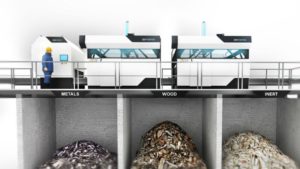In recent years, the issue of e-waste has become increasingly acute worldwide as the amount of used electronic devices grows at a rapid pace. In this context, companies and organizations are seeking innovative solutions to manage and recycle these wastes efficiently and sustainably.
 One innovative approach is the use of blockchain technology to monitor the supply chain of e-waste and improve the recycling process. This technology can be used to track the origin and history of each electronic device, from the manufacturer to the recycling process, ensuring a more transparent and responsible management of these wastes.
One innovative approach is the use of blockchain technology to monitor the supply chain of e-waste and improve the recycling process. This technology can be used to track the origin and history of each electronic device, from the manufacturer to the recycling process, ensuring a more transparent and responsible management of these wastes.
Another example of an innovative approach is the use of artificial intelligence and robots to separate and sort e-waste according to type and degree of pollution. This technology can significantly reduce the time and costs involved in the recycling process and can ensure greater efficiency in resource use.
In addition, there are innovative solutions that involve transforming e-waste into useful materials, such as using plastic waste to produce fuel or using copper waste to create new products. These solutions can reduce the volume of waste that ends up in landfills and contribute to a circular economy.
In conclusion, innovative approaches to solving the problem of e-waste can range from the use of blockchain and artificial intelligence to the transformation of waste into useful materials. It is important to continue researching and developing sustainable solutions to reduce the impact of e-waste on the environment and ensure a better future for future generations.
Haptic R&D Consulting can help companies prepare for and cope with upcoming technological and economic changes by providing innovative industrial automation solutions based on haptic technology. These solutions improve efficiency and safety, increase productivity, and offer a more immersive experience for operators.